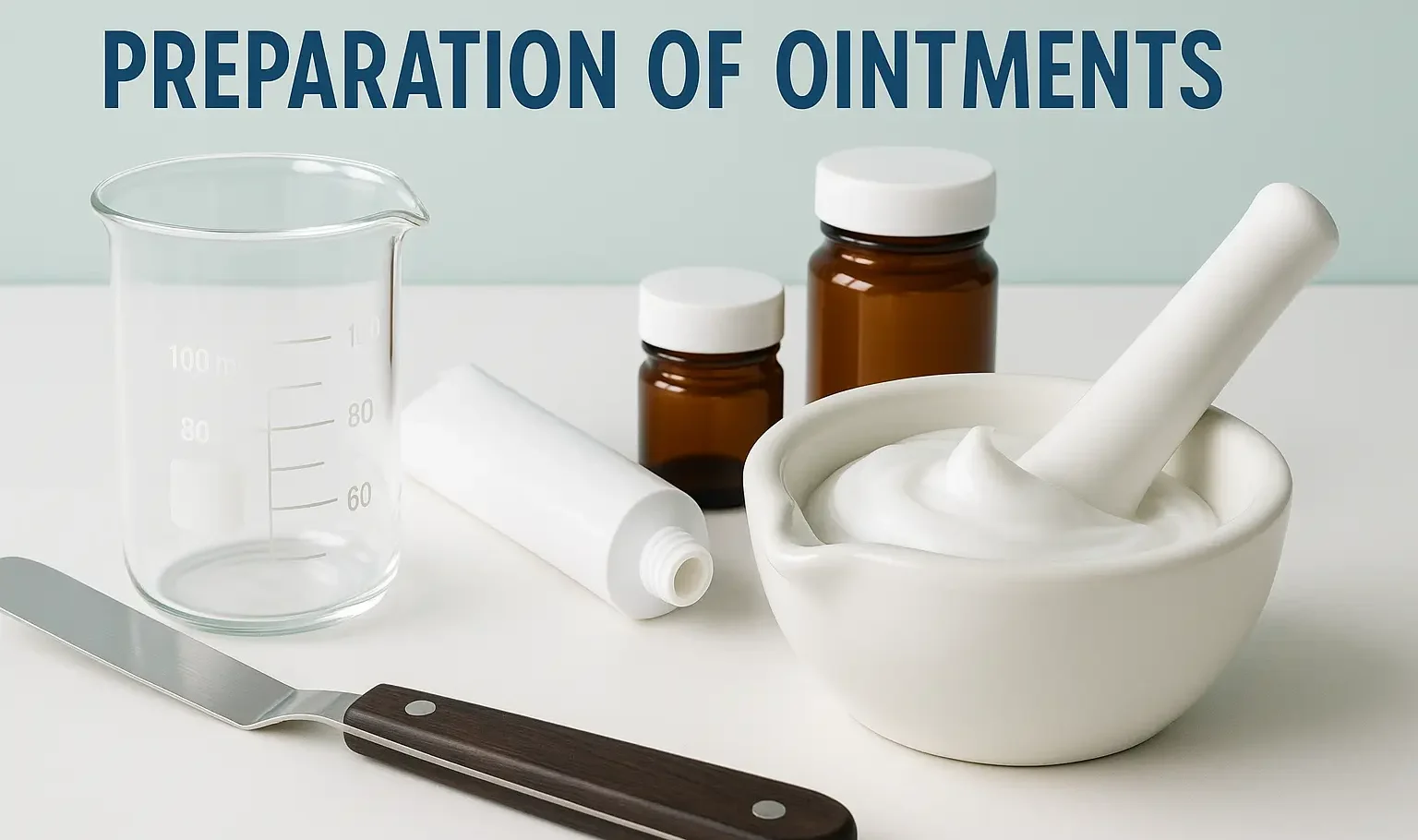- Ointments are semi-solid topical preparations used to protect, soothe, or treat the skin or mucous membranes.
- They are typically composed of a greasy base that helps retain moisture and may contain active ingredients for various therapeutic purposes.
- Ointments are widely used in dermatology, wound care, and other medical applications.
Preparation Methods

-
Fusion
- Ingredients are melted together, with the base heated first. After mixing, the blend is cooled and solidified.
- This method is used for components that need to be melted.
-
Levigation
- Solid ingredients are ground into a fine powder and then mixed into the ointment base, ensuring even distribution.
Types of Ointments
- Oleaginous (oil-based) ointments
- Absorption ointments
- Water-removable (water-washable) ointments
- Water-soluble ointments
Advertisements
Uses
- Ointments are commonly used for:
- Protection
- Moisturization
- Wound care
- Pain relief
- Antifungal and antiviral treatme

